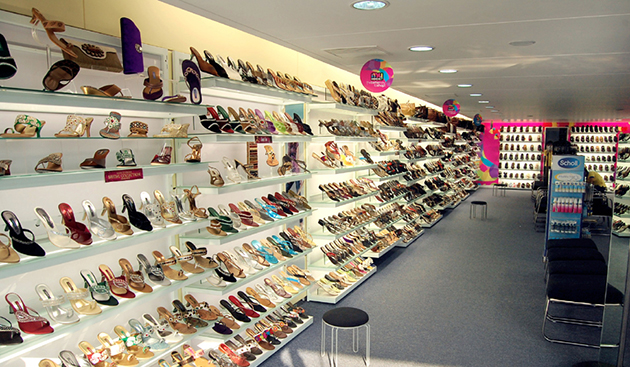'Shoe makers should focus on brand building'
By Surya Prakash Gowda | Vjmedia Works | December 29, 2014
Indian footwear market is bound to become one of the largest in the world in the upcoming years
 Presenting price analysis of men's formal shoes in the
Indian market, an Indian Institute of Management, Ahmedabad (IIM-A) working
paper suggests that shoe manufacturers should pay attention to brand building
exercise. The paper states that not only consumers are brand conscious, but
also both national and international brands command a premium of more than Rs
1,000.
Presenting price analysis of men's formal shoes in the
Indian market, an Indian Institute of Management, Ahmedabad (IIM-A) working
paper suggests that shoe manufacturers should pay attention to brand building
exercise. The paper states that not only consumers are brand conscious, but
also both national and international brands command a premium of more than Rs
1,000.Titled 'Valuing Product Differentiation in Men's Formal Footwear', the working paper has been authored by Vishal Kumar and Satish Y. Deodhar of IIM-A.
Focusing on men's formal shoes which are distinguished by the presence (or absence) of many differentiated attributes such as heel, toes, colour, surface, laces, buckles and brands, the paper has analysed pricing strategies and suggests measures for shoe makers to new and successful shoe models.
Analysis shows that shoes made of leather, shiny surface, buckles, laces, and brands carry a premium and differentiation based on colour, pointed toes, high heels, and texture is not important. In a highly competitive market, such data driven studies can provide pointers to firms in altering existing shoe models and successfully launching newer ones," the paper states as a rationale.
Quoting a report by Transparency Market Research (TMR), the paper states that the global footwear market is valued at $ 185 billion in 2011. Moreover, with an expected compound annual growth rate (CAGR) of 1.9 per cent, the market is likely to reach $ 211.5 billion by 2018.
The paper is of the view that While India does export a significant volume of footwear, it is on the cusp of a retail revolution in the domestic market. With high GDP growth rate, allowance of 100 per cent FDI in single-brand retail, changing lifestyle, and larger share of younger population,
Indian footwear market is bound to become one of the largest in the world in the upcoming years. "Currently, men's footwear segment covers more than half of the entire footwear market in India and many firms including local, national and international are competing with each other in selling differentiated shoe brands in Indian markets. Therefore, this market can be characterized as a classic case of a monopolistically competitive market with many firms selling many differentiated versions of men's formal shoes," it states.
The monopolistically competitive market makes it imperative for shoe makers and retailers to understand consumer perceptions wherein the consumer usually makes utility maximizing choices of different quality attributes of a shoe which result in buying a particular kind of shoe. This makes equilibrium prices of different shoes important. As part of its hedonic price analysis, the paper identified 10 key variables which might have impact on shoe prices and performed regression analysis by keeping the price as the dependent variable.
"Controlling for all other attributes, it is clear that consumers do not have any specific preference for shoes with heel or without, shoes with pointed toes or flat ones, shoes that have plain texture or chequered, and shoes of different colours i.e. black or brown. Therefore, no premiums are attached to these quality attributes," the paper states, adding that on the other hand, there are quite a few attributes that command premium such formal shoes with laces over slip-ons.
"Moreover, shiny shoes seem to be preferred over flat or matt finished ones indicating value attached to saving time and efforts required for frequent polishing. Consumers also seem to be very brand conscious. Both national and international brands command a premium of more than Rs 1000, despite controlling for all other quality attributes. Thus, brands seem to signal quality and it is imperative that shoe manufacturers pay attention to brand building exercise," the paper further suggests.
Meanwhile, the paper anticipates that such a study would act as a template or a yardstick for incumbent firms, potential entrants, and other stakeholders in the footwear business.
"They could work around with the various shoe attributes to develop appropriate shoe varieties particularly suited to Indian market," the paper adds.







